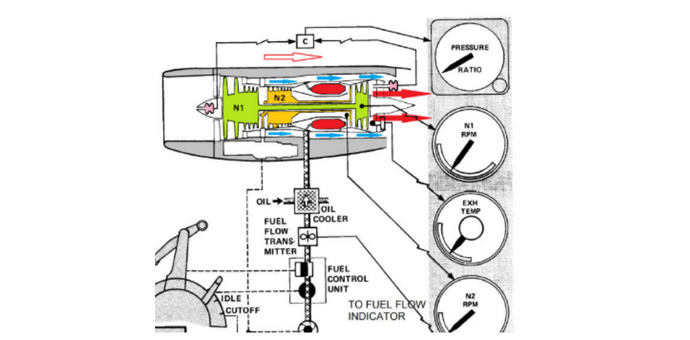What is Engine Condition Monitoring (ECM)?
ECM is the process of the monitoring of key engine parameter to detect impending failures and assess engine performance.
ECM essentially uses standard engine and aircraft instrumentation to support the monitoring of the various parameters. As such no additional measurement equipment is needed.
How does it work?
So the process of Engine Condition Trend Monitoring (ECTM) monitors and measures the changes in any of a number of performance parameters of the engine.
The process of analysis allows for the monitoring of the engine performance deterioration and provides a “heads up” regarding the potential impending malfunction of certain engine components and accessories.
The various technical requirements of the ECTM for a given engine type are specified by the engine manufacturer.
What are the Operational & Financial Benefits of the utilisation of ECM / ECTM
Minimises the possibility of unscheduled downtime whilst being able to avoid secondary damages and AOG’s
Supports early line maintenance decisions and permits better engine removal planning
Increased fuel efficiency and overall fuel consumption thanks optimized core engine cleaning
Provides for optimum aircraft operational planning as well as optimized spare engine management
Continuing Airworthiness Requirements & Benefit of ECTM
Early detection of engine deterioration is of critical importance to schedule timely maintenance action, and ECTM has been widely used to facilitate this.
ECTM is considered to be part of a good engine maintenance program and is mandatory in the following instances.
Turbine engine powered aircraft where the flight manual permits reduced power take off’s, the flight manual will contain a mandatory requirement to have procedures to ensure that the engine will make the rated power.
Incorporation of ECTM into the engine maintenance program, along with the specification of some engine parameter limits to ensure rated power, is one of the methods to meet this requirement.
In circumstances where the ECTM is not carried out in real-time, it may be necessary to supplement ECTM with full rated engine runs at regular intervals to meet the flight manual requirements.
Considering ECTM System Process Elements
ECTM relies on consistent and reliable engine performance data that includes altitude, outside air temperature (OAT), aircraft speed, turbine gas temperature, engine rpm, propeller rpm, power developed, fuel flow and others.
Effective implementation and integration of ECTM into the engine maintenance program requires the following sub-systems:
Data acquisition
Data entry
Data analysis
Follow-up actions
Computer hardware and software
Large transport aircraft manufactured by Boeing and Airbus typically have highly integrated real time data acquisition and analysis systems to support ECTM.
Next Steps
Follow this link to our Library to find & Download related documents for Free.
Sofema Aviation Services offers EASA Compliant Regulatory and Vocational Training including Engine Condition Trend Monitoring. For details please see www.sassofia.com or email team@sassofia.com





